by Sandra Gulland | Oct 2, 2011 | Adventures of a Writing Life, The Shadow Queen, Work in Process (WIP) |

Canadian Thanksgiving is coming — a big, glorious dinner for over twenty friends and family at our house — and then we begin our winter transition to Mexico.
It’s not easy moving an office back and forth. Or rather, I should say: it’s not easy for a historical novelist.
I’ve begun to give thought to which reference books to take with me. I’ve a stack of books I brought back with me from Mexico in the spring — still untouched.
How many will I really need? The Net (Books Google), and the fact that many books are now available to me on iPad, have changed the way I research. Even so, I will inevitably take a small suitcase—a very heavy small suitcase—filled with notes, papers and books. I do it every year, and every year the decisions about what stays and what goes torments me.
But the main thing I must do — before next weekend, I pray — is finish draft 5.2 of The Next Novel. I will print it out in Mexico, and read/edit it there. And then — by grace of the muses — I plan to have it ready to send to my agent, Jackie Kaiser, by the end of October.
Enormous Changes at the Last Minute: I think often of the title of Grace Paley’s novel, for it seems to capture my writing process (every time). I’ve a main character gradually, ever so gradually, coming into focus. I’ve entire chapters that need to be created to fill gaping holes in the reconstruction. The change from 3rd person to 1st not long ago seems easy by comparison.
In moaning to my writers’ group, poet Jenifer McVaugh said, “You’ve got everything. You’re just missing the heart of the story.”
Exactly. That’s what the process of writing a novel is about: finding the (damned) heart of the story. And it never, at least for me, seems to come early on.
Novelists out there: what is your process? Is there any way to avoid this somewhat frantic scramble?
And one more question: What do you think of the title This Bright Darkness?
{Image above: view from my office window.}
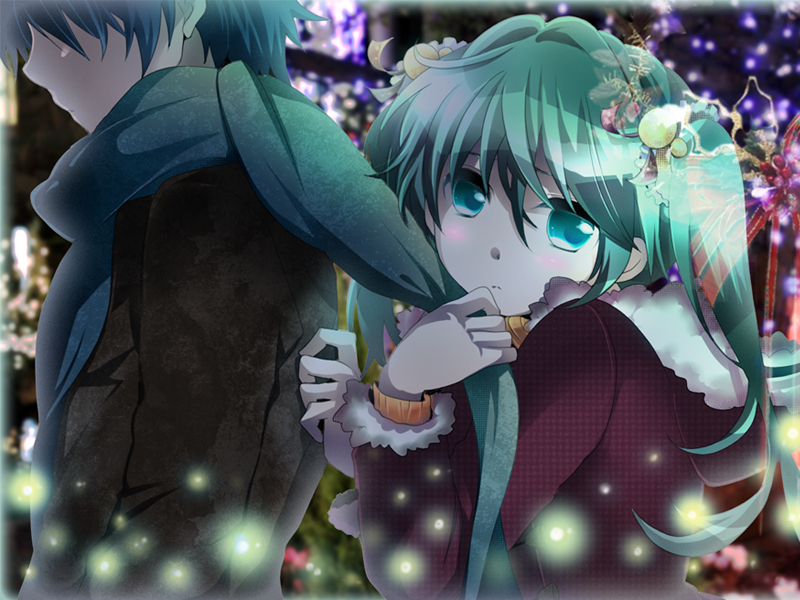
by Sandra Gulland | Feb 2, 2011 | Adventures of a Writing Life, On Character Development, The Shadow Queen, Work in Process (WIP) |
I find NY agent Donald Maass often instructive. I needed this observation today:
So how can we ensure that our characters are as passionately engaged on the page as they are in our minds? The easiest way to excavate their passions is to develop — and put on display — their opinions.
How does your protagonist feel about grunge boots? Puccini? Porcini mushrooms? Hegel’s idea of a civil society? The future of aviation? Texting while walking? It’s interesting to learn such opinions, isn’t it?
That’s my point. Characters who are engaged — who care about things, small and big — in turn engage us.
(via Writer Unboxed » Blog Archive » Depth of Character)
I tend to hold back too much in my writing. It’s time I let Claude have her say.

by Sandra Gulland | May 17, 2009 | Adventures of a Writing Life, The Shadow Queen, Work in Process (WIP) |
I spent most of today revising, yet again, the “outline” of The Next Novel, which I’m now calling The End of Magic. I do love a rainy Sunday: it’s a good excuse to putter in the office all day. I got out for a bit to plant potatoes and peas, but that was pretty much it.
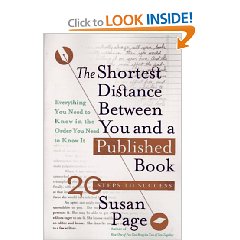 And reading, of course. I’m browsing the books I left out last October, one on the breakfast counter (Pen on Fire), another on the bedside table (John Truby‘s The Anatomy of Story). I finished The Gathering by Anne Enright, and The Shortest Distance Between You and a Published Book by Susan Page, who I know in San Miguel.
And reading, of course. I’m browsing the books I left out last October, one on the breakfast counter (Pen on Fire), another on the bedside table (John Truby‘s The Anatomy of Story). I finished The Gathering by Anne Enright, and The Shortest Distance Between You and a Published Book by Susan Page, who I know in San Miguel.
I’ve been hearing good things about The Shortest Distance for some time, so I’m happy to have been able to read it, at last. It didn’t disappoint. It’s a very down-to-earth book on getting published — the nuts and bolts of it. I recommend it. I learned some important things from it.
I especially liked the chapter titled “Procrastination” — for obvious reasons! Susan writes about “acedia” (uh-see-dee-uh), the painfully slow movements required to begin a new project or to return to a project after a break. It’s simply part of the creative process. Procrastination is resistance to doing something. Acedia is a slow giving into it, a letting go of resistance. My own feeling is that resistance is the first step in the creative process, and (now that I have this new word) acedia is the second. I’m sort of in-between the two right now.
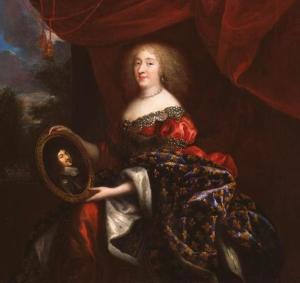
I’m pleased with my “outline,” but there are things about it that certainly aren’t right. I want to tighten, hone. While it was printing, I picked up Truby’s The Anatomy of Story (peppered with post-it note thoughts about my abandoned novel about La Grande Mademoiselle: my ghost!). I’ve yet to get beyond the second chapter, “Premise,” because it is so dense: there is so much to try to work out: What is the premise of the novel? What are the possibilities? What is the designing principle? What is the conflict? The basic action? The character change? The moral choice?
So Truby’s book is peppered once again with post-it notes, but on The End of Magic. Working through these questions — or rather, trying to work through them I begin to question my entire outline. I’m ready to revise it even as the last page slides out of the printer.
Enough! (For today.)
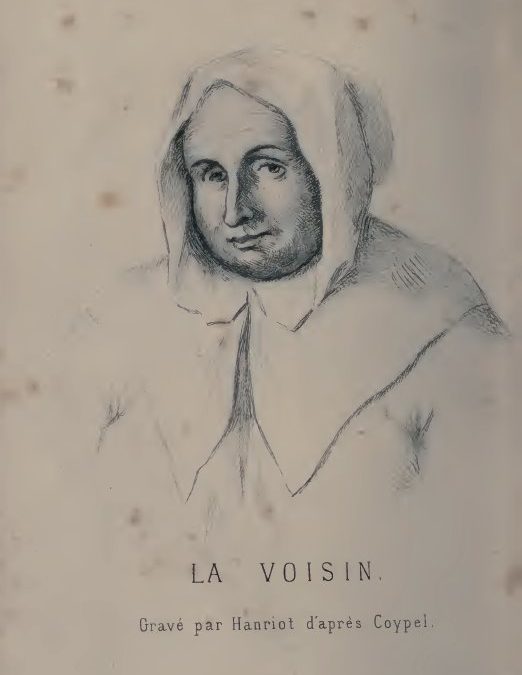
by Sandra Gulland | Feb 17, 2009 | Baroque Explorations, On Research, The Shadow Queen, Work in Process (WIP) |
On reading the book Strange Revelations, I was convinced that Claude des Oeillets, the heroine of the novel I am writing, was guilty of dealing with the witch Madame Voisin.
The testimonies against Claude recorded in the Bastille Archives are overwhelming in number and detail. How could so many people be wrong?
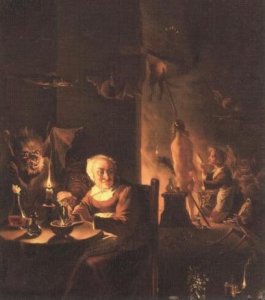
Les Des Oeillets: une grande comédienne, a biography about Claude des Oeillets and her mother
Now, having read and reread Jean Lemoine‘s Les Des Oeillets: une grande comédienne, une maitresse de Louis XIV, I’m not so sure.
Jean Lemoine is one of those wonderfully careful historians who documents every claim. The book is, in fact, made up of documents: leases on houses, money loaned, money paid, last wills and testaments. The stuff of history.
The witch Voisin
What’s telling, to me, is that Madame Voisin insisted, under terrible torture, right up to the day of her execution, that she’d not had any dealings with either Claude des Oeillets or her employer Athénaïs de Montespan.
Voisin had squealed on many, many others at court, most of them high-and-mighty. There was nothing to be gained in not mentioning Claude des Oeillets or Montespan. What would be her motivation?
Possibly: to tell the truth?
The accusations poured in from other prisoners after Voisin’s execution. What I’ve learned from Lemoine’s work is that Claude was called in by Louvois, the Minister of War, and, horrified by what was being said, insisted on being shown to her accusers. She swore on her life that they would not know her.
The “test” was unfortunately mishandled (as noted later by minister Colbert): Claude des Oeillets wasn’t shown to the prisoners with other people. The prisoners had been grilled shortly before about Claude. It was easy enough for them to guess who she was.
She insisted on another meeting with Louvois, pleading her case. This was followed up with a letter, in which she offered explanations. Louvois—who would have been happy to find any evidence compromising Athénaïs de Montespan—was ultimately convinced of her innocence … as was the King and Colbert.
Conclusion: Was Claude des Oeillets guilty?
And so: I’m not yet sure. The reason why Claude’s guilt or innocence is critical is because it directly implicates Athénaïs—the Shadow Queen of France at that time. I’ve ordered Jean Lemoine’s book on Athénaïs and the Affair of the Poisons. Until then, I remain puzzled, unconvinced either way.
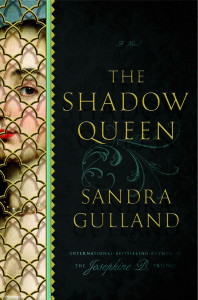
Note: this post was written while I was researching and writing The Shadow Queen. If you have read the novel, you will know that I reached the conclusion that Claude (“Claudette”) was both guilty and innocent.









